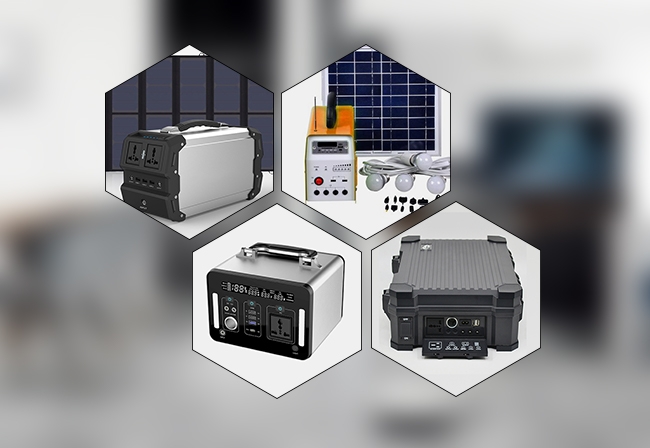In recent years, the shift towards sustainable energy solutions has seen a significant rise, driven by the growing awareness of environmental impacts and the need for cleaner energy alternatives. Among these innovations, portable solar powered generators have emerged as a popular choice for those seeking a reliable, eco-friendly power source. These devices harness solar energy, store it in batteries, and provide electricity for various uses. However, a common question arises: Can a portable solar generator be used indoors? This article explores the practicality, benefits, and considerations of using solar generators indoors.

What is portable solar generator?
A portable solar power generator is a compact, mobile power station that harnesses solar energy to generate electricity. It typically consists of solar panels, a battery storage system, and an inverter. Solar panels capture sunlight and convert it into direct current (DC) electricity. This electricity is then stored in the battery for later use. The inverter converts the stored DC electricity into alternating current (AC) power, which is compatible with most household appliances and devices.
Key features often include multiple charging options (solar, AC, and sometimes car), a variety of output ports (USB, AC, DC). While they generally have lower power capacities compared to traditional fuel generators, advancements in technology continue to improve their efficiency, capacity, and overall usability.
Practicality of indoor use:
While portable solar generators are primarily designed for outdoor use to maximize exposure to sunlight, they can indeed be used indoors under certain conditions. Here are several factors to consider:
- Location of Solar Panels. To use a solar powered generator indoors, the solar panels must still be placed outside where they can receive adequate sunlight. This means running a connection from the panels outside to the generator inside. Common placement options include balconies, windowsills, or even on the roof, provided the panels can be securely installed and properly angled to capture the maximum amount of sunlight.
- Power Needs. The feasibility of using a solar generator indoors depends largely on your power requirements. Portable solar power generators come in various capacities, typically ranging from small units that can charge a few devices to larger ones that can power multiple appliances. Assessing your energy consumption and the generator's capacity is crucial to ensure it meets your needs.
- Ventilation and Safety. Unlike traditional gas-powered generators, solar generators do not emit harmful fumes, making them safe for indoor use. However, proper ventilation around the battery unit is necessary to prevent overheating. Ensuring the generator is placed in a cool, dry area with good air circulation will enhance its efficiency and longevity.
What are the benefits of using solar generator indoor?
Using a portable battery power station indoors offers several advantages:

- Eco-Friendly Energy. Solar energy is a renewable, clean source of power that reduces reliance on fossil fuels and decreases greenhouse gas emissions. By using a solar generator indoors, you contribute to a sustainable environment.
- Cost Savings. Although the initial investment in a portable power station may be higher than traditional generators, the long-term savings on electricity bills can be significant. Solar energy is free, and the maintenance costs for solar generators are relatively low.
- Emergency Backup. In the event of a power outage, a portable solar generator can provide a reliable backup power source for essential devices and appliances. This is particularly beneficial for households in areas prone to frequent blackouts or natural disasters. Such as 100W, 200W or 500W solar generator, are commonly used for home.
- Portability and Versatility. The compact design of powerful solar generators allows for easy movement and placement within the home. They can be used to power different rooms or devices as needed, providing flexibility and convenience.
Considerations and limitations:
While the benefits are compelling, there are also some considerations and limitations to keep in mind:
- Sunlight Dependence. The efficiency of a solar generator is directly tied to the availability of sunlight. During cloudy days, rainy seasons, or in regions with limited sunlight, the generator's performance may be compromised. It's important to have realistic expectations about the amount of power that can be generated and stored.
- Initial Investment. The cost of purchasing a high-capacity portable solar generator and the necessary solar panels can be substantial. It's essential to evaluate the long-term benefits against the upfront costs to determine if it's a viable investment for your household.
- Space Requirements. Adequate space is needed to install the solar panels outside and to store the generator inside. This may not be feasible for individuals living in small apartments or homes without outdoor access.
- Energy Storage. The battery capacity of portable solar power generators varies, and it's crucial to choose a model that aligns with your energy needs. Overdrawing power can lead to quicker depletion of the battery, requiring more frequent recharging.
Conclusion:
Portable solar generators offer a versatile, eco-friendly, and cost-effective solution for providing electricity in various settings, including indoor use. They are particularly useful during power outages, in off-grid living situations, and as part of emergency preparedness plans. While there are some limitations, such as lower power output and dependency on sunlight, the benefits of quiet operation, safety, and sustainability make them a valuable addition to modern energy solutions. Inverter Online Shop also give some practicable solutions for you.
When considering using a solar generator indoors, it is essential to address practical aspects such as efficient charging methods, ensuring proper ventilation, and adhering to electrical safety guidelines. By doing so, users can effectively harness the power of the sun to meet their indoor energy needs, contributing to a more sustainable and resilient energy future.
